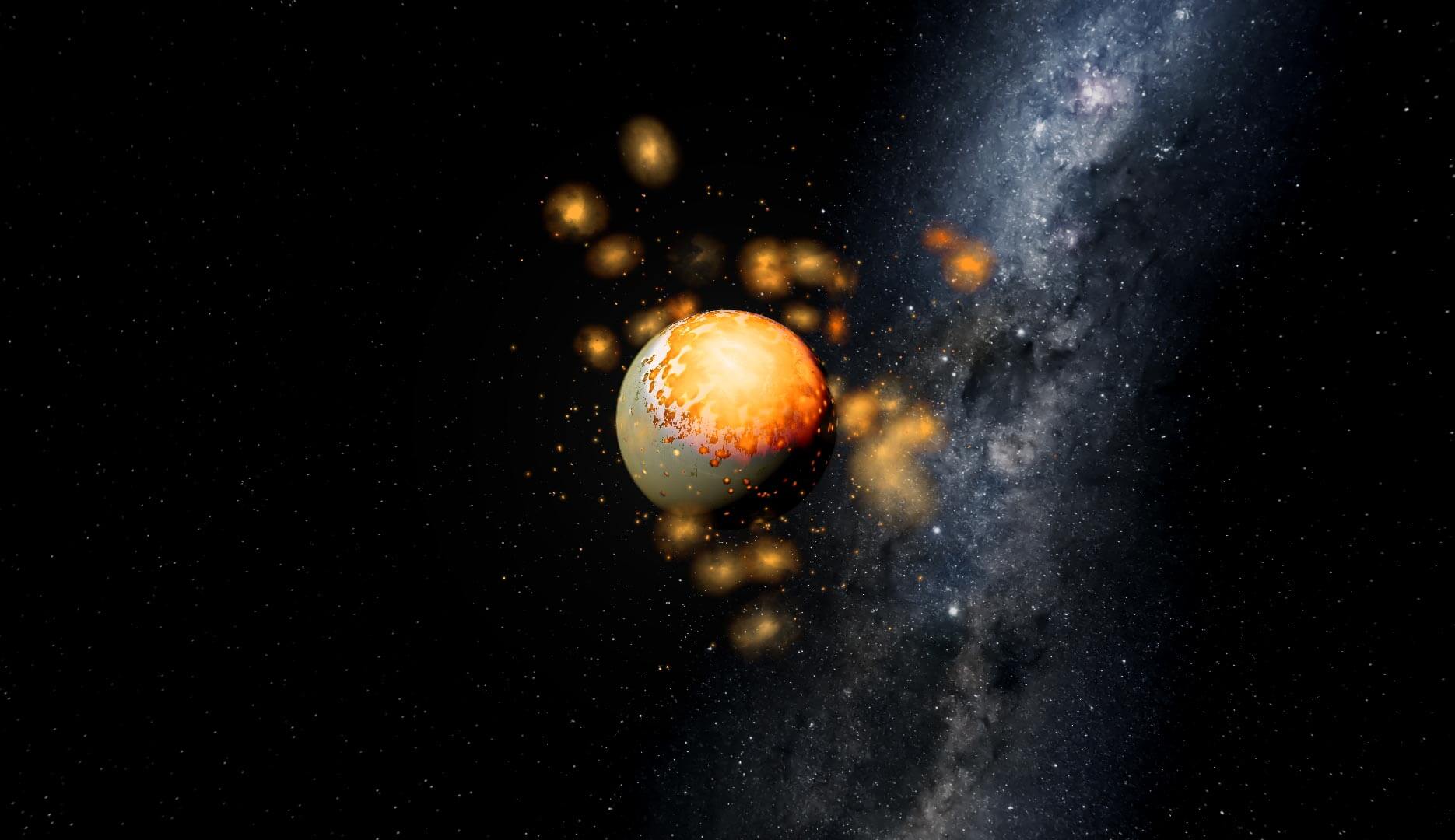A team led by the Southwest Research Institute (SwRI) has created a model of the early impacts on Venus to explain how Earth's sister planet maintained a young surface despite not having plate tectonics.

A team led by the Southwest Research Institute (SwRI) has created a model of the early impacts on Venus to explain how Earth's sister planet maintained a young surface despite not having plate tectonics. By comparing the early collision history of Earth and Venus, they believe that Venus received more high-speed, high-energy impacts. These impacts caused a very hot core to form, which created prolonged volcanism and altered the surface of the planet.
"One of the mysteries of the inner solar system is that, despite their similar size and volumetric density, Earth and Venus behave in a strikingly different way, which particularly affects the processes that drive materials on the planet," said Dr. Simona Marki, lead author of a new paper on these findings in Nature Astronomy.
The Earth's moving plates are constantly changing its surface as blocks of crust collide and form mountain ranges, and in some places volcanoes. Venus has more volcanoes than any other planet in the solar system but its surface is just one continuous slab. More than 80,000 volcanoes – 60 times more than Earth – played an important role in renewing the face of the planet through floods of lava, which may continue to this day. Previous simulations had difficulty creating scenarios that support such a level of volcanism.
"Our latest models show that multi-year volcanism caused by early energetic collisions on Venus provides a compelling explanation for the young age of the surface," said Yale University co-author Professor Ion Korenga. "This enormous volcanic activity is fed by a very hot core, which causes intense internal melting."
This high-resolution computer simulation (one million particles) shows a body with a diameter of 3,000 km hitting Venus head-on at a speed of 30 km per second. On the left side, the colors indicate different materials: brown - the core of Venus, white - the core of the body and green - the silicate shell of both objects. The colors on the right indicate the temperature of the materials.
Credit: Southwest Research Institute
Earth and Venus were formed in the same neighborhood of the solar system when solid materials collided with each other and gradually coalesced to form the two rocky planets. The slight difference between the planets' distances from the Sun changed their vulnerability history, especially the number and outcome of these events. The reason for this difference is that Venus is closer to the Sun and moves faster around it, and this adds energy to the impact conditions. In addition, in the wake of the collisional growth, colliding objects originating from beyond the Earth's orbit are usually dominant and need higher levels of orbital eccentricity to collide with Venus compared to a collision with Israel, therefore the impacts are stronger.
If the impacts on Venus were at a much higher velocity than on Earth, several large impacts could have had drastically different results, with important implications for subsequent geophysical evolution. This multidisciplinary team combined expertise in modeling large-scale collisions and geodynamic processes to assess the impact of these collisions on the long-term evolution of Venus.
More of the topic in Hayadan:

2 תגובות
A little more oil tycoons who do what they want and bribe politicians and we will reach the state of Venus.
It wouldn't take much for the earth to reach the state of Venus, if the earth had a slow rotation around its axis and no moon, there would be no life and the temperature would reach the order of magnitude of Venus, in our time man does everything, literally everything, to bring the earth to the state of Venus, An advanced technological society consumes tremendous energy that is fossilized in the earth, and destroys itself. It is possible that alien civilizations destroyed themselves due to increased consumption of energy from the planet, and therefore there are not many alien civilizations.